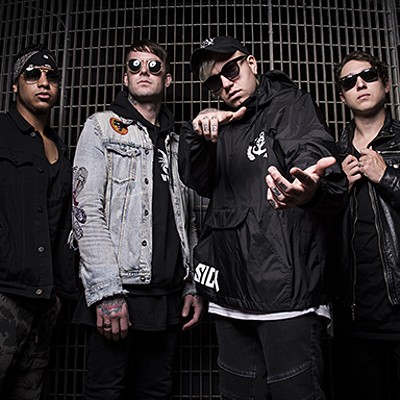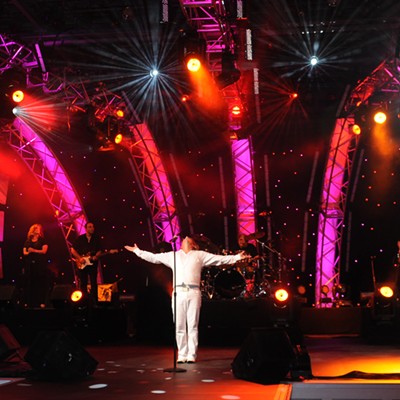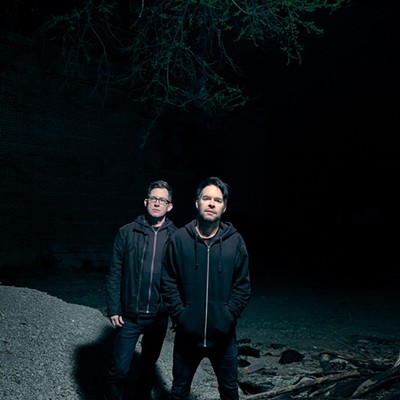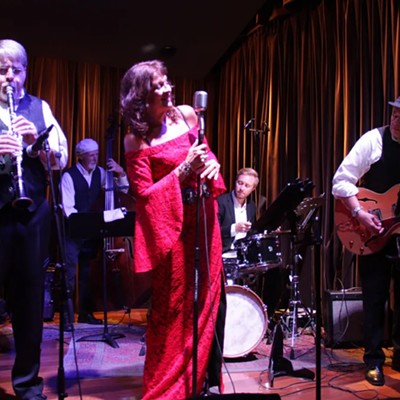The stunning painting's use on the cover of a 21st-century rock album seems somewhat anachronistic. But it captured the collective imaginations of the young band's members, said keyboardist Casey Wescott.
"That artwork is weird in general, because I don't think we sound like music from that time or anything," Wescott said.
"But as soon as Robin showed that to me, I thought, 'Wow.' I really dug it. Maybe it's mainly interesting because it depicts several different narratives (that) all seem to be happening at the same time, and they come into one. That's a lot of what we are trying to do with the album."
The "Robin" to whom Wescott referred is Fleet Foxes frontman Robin Pecknold, who at 22 is something of a singer-songwriter wunderkind.
Speaking from his home in the Puget Sound area, Wescott was fighting off the effects of jet lag. The band had returned the day before from their first-ever concert tour of Europe and Great Britain.
Fleet Foxes only had a few days of rest before hitting the road again for an American tour that extends through August. The band will visit Tucson on Monday, June 30, for a performance at Solar Culture Gallery.
Pecknold has been playing music with boyhood best friend and guitarist Skyler Skjelset for coming up on a decade. When they were teenagers, they dug into their parents' record collections: Bob Dylan; Crosby, Stills and Nash; the Beach Boys; the Zombies; Fairport Convention; Joni Mitchell; Love; and Buffalo Springfield, to name a few.
They formed Fleet Foxes in 2006, initially hooking up with Wescott. Rhythm-section players have come and gone, with the group currently including bassist Christian Wargo and drummer Josh Tillman.
Fleet Foxes were quickly snapped up by Sub Pop Records, the prestigious Seattle-based independent label, which released the band's excellent Fleet Foxes earlier this month.
The Fleet Foxes' sound is an intricate architecture of baroque, psychedelic rock with addition of the infectious melodies of classic pop music. They accomplish this with not only the standard weapons of rock 'n' roll, but with instruments such as tympani, mandolin, organ, dulcimer and koto.
The music is built around amazing multi-part vocal harmonies inspired by the aforementioned CSN and the Beach Boys, as well as other California pop vocal acts such as Seals and Crofts, and America, not to forget doo-wop, rural American and English folk music, traditional hymns and even early-music choral compositions.
Four of the band members sing, Wescott said.
"Skye doesn't sing. Yet. He's been really wrapped in the last couple of years in creating the guitar sounds and textures. But he'll probably start to sing in the near future. We, frankly, need another voice in our arrangements to accomplish some of the things compositionally that we want to. We need another voice to counter some of the vocal melodies that we are writing."
One is tempted to wonder whether Fleet Foxes' complex harmonies and adventurous embrace of such varied source material may make the band's lovely music somewhat less accessible to the average contemporary music listener. Wescott begged to differ, perhaps granting more credit to garden-variety music fans than I do.
"More and more, I feel like the contemporary listener is exposed to so much in our culture, you know, that it's not as if they are seeing an airplane for the first time. People are pretty much exposed to and experienced in a wide variety of cultural influences, including those that inspire us. In general, I feel that everything has become quite a bit more accessible to everyone."
Wescott, who was born in 1981, is indeed no musical elitist. His first musical memory is hearing Michael Jackson's Thriller played in his family's car, and a recent favorite is R. Kelly.
Even before the release of their first full-length album, Fleet Foxes had product on record-store shelves and through online sources. Their second EP, the equally-impressive five-song Sun Giant, came out earlier this year, in part to whet consumers' appetites.
Sun Giant actually was recorded after the album was in the can. The odd timing came as a result of Sub Pop's schedule for the release of the full-length album, Wescott said.
"We finished the album in November, and it was scheduled to come out in June, and we were facing the wait for that. So we thought, 'We're going to be bored, so let's do an EP, and then do a smaller tour before that all happens.' We recorded it and pressed it, and it came out first mainly because of the tour."
One of Fleet Foxes' primary goals is to create experiences and moments in music that feel meaningful, Wescott said.
"There are these times when you're rehearsing or recording or writing or playing where something happens, or something changes, and that causes something else to sound different. Those moments are the ones where you sort of start to get that feeling that something significant is happening, that it's working.
"As you keep going more and more, you're trying to save and share those moments, and maybe you'll know if you don't get that feeling, and you can leave those moments out. It's all really about trying to compose those moments in space and time."










